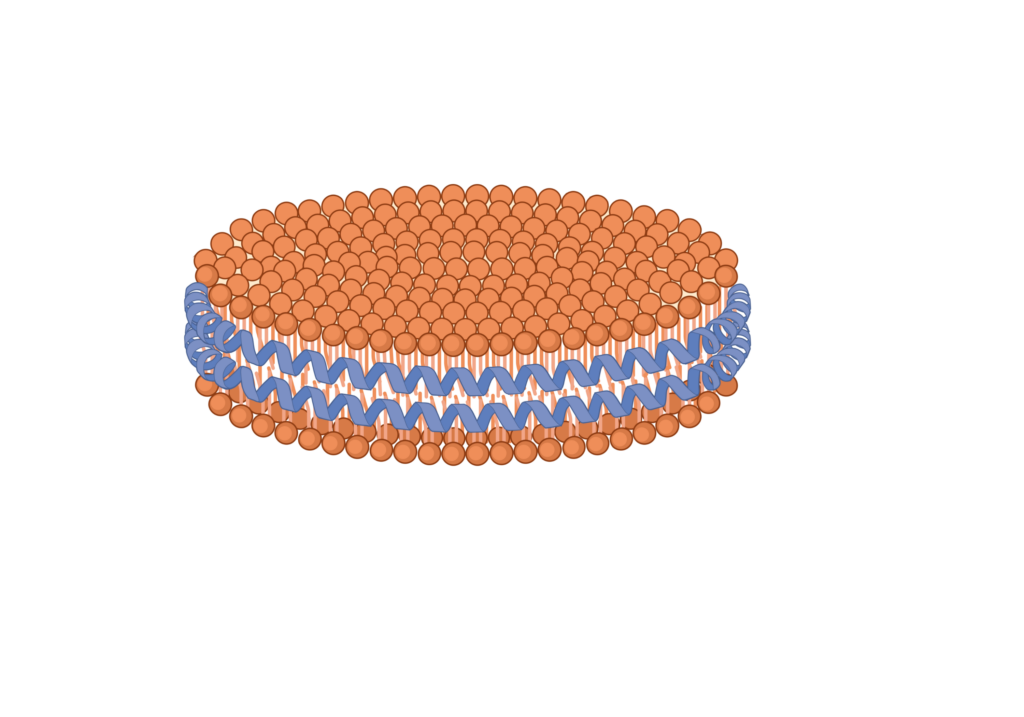Insane in the Membrane- Using Nanodiscs to Study the Endocannabinoid System
Samantha Hilston, Nikolai Zvonok, and Alexandros Makriyannis – Center for Drug Discovery, Northeastern University

Background:
The endocannabinoid system (ECS) is a complex cellular signaling network present in all vertebrates, comprising receptors, endocannabinoids, and enzymes. Understanding this system is challenging due to its intimate association with cellular membranes. Traditional scientific methods typically favor studying components in a solution rather than within membranes due to the variability in size and composition of membrane fragments. Nanodiscs allow membranes and membrane-bound proteins to be studied in a near-native state by controlling the size and composition of coin-shaped membrane pieces. In preliminary experiments, we explored the feasibility of using Nanodiscs to investigate the wildtype enzyme α/β-hydrolase domain containing 6 (ABHD6), a critical ECS component. ABHD6 has a transmembrane domain, making Nanodiscs a promising tool for its study. However, ABHD6 is a promiscuous enzyme that breaks down a wide variety of lipids, so to address the concern of ABHD6 potentially destroying the membrane of the Nanodisc, experiments were first performed with a soluble variant of the enzyme, ∆29-4-ABHD6, which lacks a transmembrane domain.
Methods:
Lipids were screened to avoid building the membrane of the Nanodiscs with lipids broken down by ABHD6. To this end, a fluorescent activity assay from our lab was modified for convenient screening of lipids for indirect evidence of whether they broken down by soluble ABHD6. Nanodiscs were then assembled with selected lipids, and Nanodisc stability in the presence of soluble ABHD6 was evaluated using size exclusion chromatography.
Results:
Our fluorescent assay revealed that the lipids tested enhanced ∆29-4-ABHD6 activity without any signs of enzymatic lipid breakdown. The Nanodiscs were successfully assembled; they proved consistent in size and shape and remained stable in the presence of soluble ABHD6.
Discussion:
The increased ∆29-4-ABHD6 activity in the presence of lipids suggests an allosteric interaction, underscoring the membrane’s significance in enzyme function. The absence of evidence of lipid breakdown supports the suitability of the screened lipids for stable Nanodisc assembly. The Nanodiscs assembled did not themselves contain ABHD6, but rather were shown to be stable in the presence of our soluble ABHD6 variant. Future work involves reconstituting wildtype ABHD6 into Nanodiscs and exploring interactions with inhibitors of interest through hydrogen/deuterium exchange.
Conclusion:
Nanodisc technology holds promise for studying wildtype ABHD6 in a near-native state, advancing our understanding of the endocannabinoid system’s intricacies.
